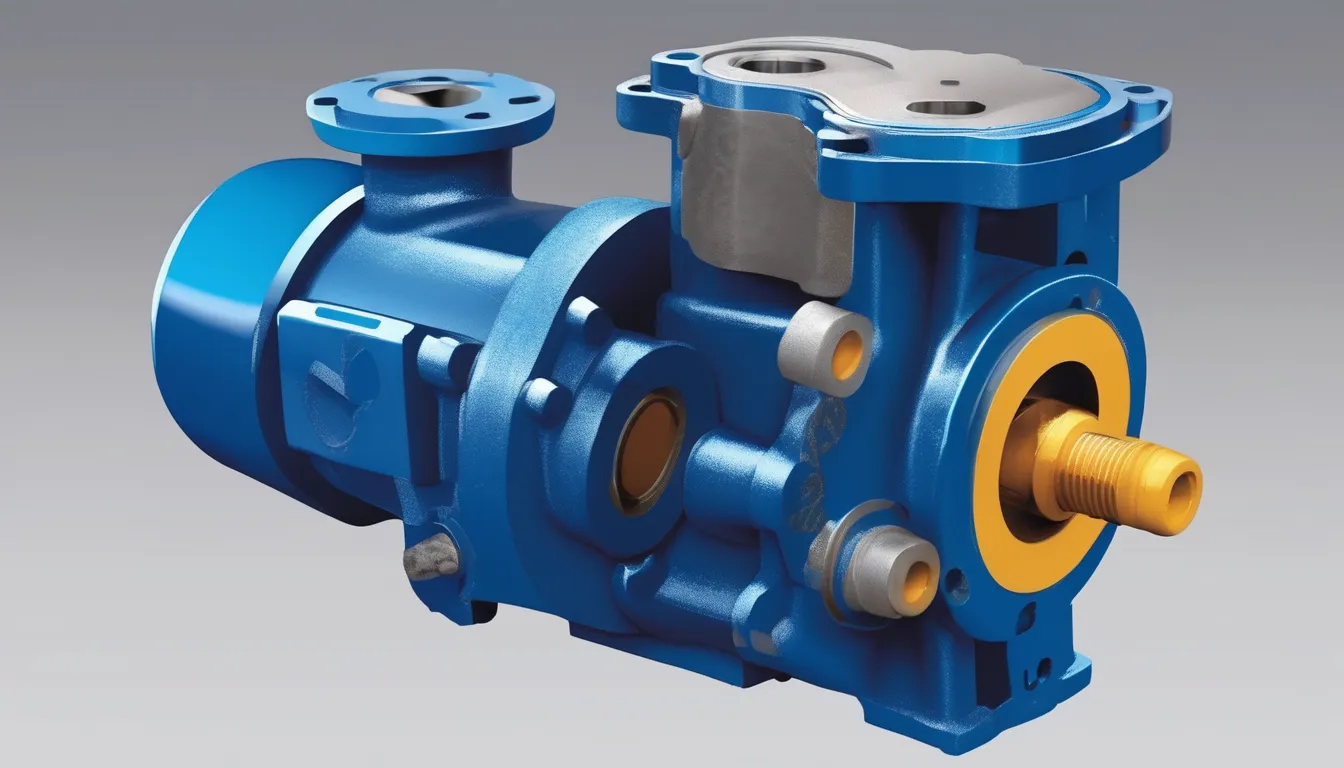When you’re tasked with selecting the right gear pump for your industrial applications, several critical factors come into play. You’ll need to evaluate the viscosity of the fluids you’re working with, as this will significantly influence your choice between internal and external gear pumps. Additionally, understanding your flow rate requirements and ensuring material compatibility are essential steps. But that’s just the beginning; the pressure ratings also demand your attention to avoid potential failures. So, how do you balance all these considerations effectively?
Understanding Fluid Characteristics
When selecting a gear pump for industrial applications, understanding fluid characteristics is crucial. You need to consider the type of fluid you’re working with, as it significantly impacts the pump’s performance. Different fluids have unique properties, including density, chemical compatibility, and temperature.
For instance, if you’re dealing with corrosive fluids, ensure the pump materials can withstand such conditions to prevent damage and maintain efficiency.
Additionally, you should identify whether the fluid contains solid particles. This can affect the pump’s operation and longevity. Gear pumps typically handle clean liquids well, but if your fluid has particulates, you might need a pump designed specifically for that purpose.
Another essential aspect is the fluid’s temperature range. High temperatures can alter viscosity and affect the pump’s ability to function correctly. You’ll want a pump that can operate effectively within the expected temperature limits.
Lastly, consider the fluid’s pressure requirements. Understanding these characteristics will help you choose a gear pump that meets your specific needs, ensuring reliable performance and longevity in your industrial applications.
Evaluating Viscosity Requirements
Viscosity plays a pivotal role in the performance of gear pumps, directly influencing how efficiently they move fluids. When you’re selecting a gear pump, understanding the viscosity of your fluid is crucial. If the viscosity is too high, the pump may struggle to maintain optimal flow rates, leading to potential damage or inefficiency. Conversely, if the viscosity is too low, you may face issues with leakage or inadequate pressure.
To help you evaluate viscosity requirements, consider the following factors:
| Viscosity Range | Pump Type |
|---|---|
| Low (1-100 cP) | External Gear Pump |
| Medium (100-500 cP) | Internal Gear Pump |
| High (500-1000 cP) | Progressive Cavity Pump |
| Very High (1000+ cP) | Specialized Pumps |
| Temperature Effects | Adjust Pump Selection |
You should also factor in temperature changes, as viscosity can fluctuate with temperature variations. Always aim to choose a gear pump that operates efficiently within your fluid’s viscosity range. This approach will ensure optimal performance and longevity of your pump system.
Determining Flow Rate Needs
Selecting the right پمپ دنده ای pump also involves understanding your flow rate requirements. This step is crucial because the pump’s ability to deliver the right amount of fluid directly impacts your system’s efficiency. To determine your flow rate needs, start by assessing the specific application and the volume of fluid you need to move within a given timeframe.
Consider factors like the type of fluid, its viscosity, and the operational conditions. If you’re handling thicker fluids, you’ll likely need a pump that can maintain a consistent flow rate despite the increased resistance.
It’s also essential to factor in any variations in demand. For instance, if your processes require fluctuating flow rates, a pump with adjustable capabilities might be necessary.
It’s wise to consult with your team to gather data on peak and average flow rates. This information will guide you in selecting a pump that can consistently meet those demands.
Assessing Pressure Ratings
Understanding your system’s pressure ratings is vital for choosing the right gear pump. Pressure ratings determine how much pressure your pump can handle without risking failure.
When you’re assessing these ratings, first identify the maximum pressure your application will experience. This includes both the operating pressure and any potential surges.
Next, you should compare your system’s requirements with the specifications provided by different gear pump manufacturers. Look for pumps that can consistently operate above your system’s maximum pressure to ensure reliability and longevity.
Remember to consider the pressure ratings provided in both static and dynamic conditions, as these can vary.
It’s also crucial to factor in safety margins. A pump rated for a little more than your maximum pressure can help prevent unexpected issues caused by pressure spikes.
Don’t overlook the importance of temperature effects on pressure ratings either; higher temperatures can reduce a pump’s ability to handle pressure.
Ultimately, selecting a gear pump with appropriate pressure ratings ensures efficient operation and minimizes the risk of equipment failure, saving you time and money in the long run.
Considering Material Compatibility
Once you’ve evaluated pressure ratings, the next step is to consider material compatibility. The materials used in your gear pump must align with the fluids you’ll be handling. Different fluids can react differently with various materials, leading to corrosion, degradation, or contamination.
Start by identifying the type of fluid you’ll pump—whether it’s water, oil, chemicals, or food products. Each of these has unique compatibility requirements. For instance, if you’re pumping corrosive chemicals, you’ll need a pump made from materials like stainless steel or specialized plastics that resist chemical reactions.
Next, think about the temperature of the fluids. High temperatures can affect material integrity, so ensure the chosen materials can withstand the heat without breaking down.
Don’t forget about the environmental conditions, too. If your pump will be exposed to moisture, dust, or extreme temperatures, you’ll want materials that can handle those challenges without losing performance.
Conclusion
In summary, choosing the right gear pump for your industrial needs requires careful consideration of fluid characteristics, viscosity, flow rate, pressure ratings, and material compatibility. By evaluating these key factors, you can ensure the pump you select performs efficiently and reliably in your specific application. Don’t overlook the importance of each element, as the right choice can significantly impact your operations. Take the time to assess your requirements and make an informed decision for optimal results.



